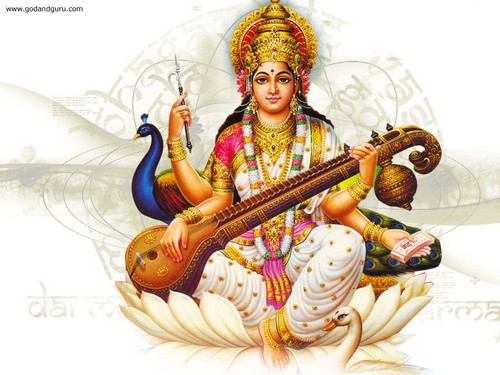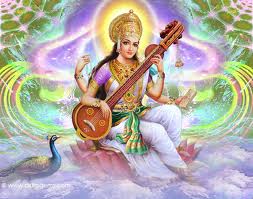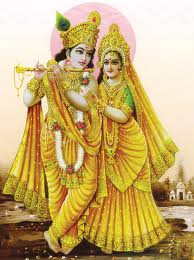During the Vedic period, both Vishnu and Shiva (as identified with Rudra) played relatively minor roles, but bởi the time of the Brahmanas (c. 1000-700 BC), both were gaining ascendance.[193] bởi the Puranic period, both deities had major sects that competed with one another for devotees.[194] Many stories developed hiển thị different types of relationships between these two important deities.
Sectarian groups each presented their own preferred deity as supreme. Vishnu in his myths "becomes" Shiva.[195] The Vishnu Purana (4th c. AD) shows Vishnu awakening and becoming both Brahmā to create the world and Shiva to destroy it.[196] Shiva also is viewed as a manifestation of Vishnu in the Bhagavata Purana.[197] In Shaivite myths, on the other hand, Shiva comes to the fore and acts independently and alone to create, preserve, destroy, hide, and to bless (five works).[198] In one Shaivite myth of the origin of the lingam, both Vishnu and Brahmā are revealed as emanations from Shiva's manifestation as a towering pillar of flame.[199] The Śatarudrīya, a Shaivite hymn, says that Shiva is "of the form of Vishnu".[200] Differences in viewpoints between the two sects are apparent in the story of Śarabha (also spelled "Sharabha"), the name of Shiva's incarnation in the composite form of man, bird, and beast. Shiva assumed that unusual form of Sarabheshwara to chastise Vishnu, who in his hybrid form as Narasimha, the man-lion, killed Hiranyakashipu.[201][202] However, Vaishnava followers including Dvaita scholars, such as Vijayindra Tirtha (1539–95) dispute this view of Narasimha based on their đọc of Sattvika Puranas and Śruti texts.[203]
Syncretic forces produced stories in which the two deities were shown in cooperative relationships and combined forms. Harihara is the name of a combined deity form of both Vishnu (Hari) and Shiva (Hara).[204] This dual form, which is also called Harirudra, is mentioned in the Mahabharata.[205] An example of a collaboration story is one được trao to explain Shiva's epithet Mahābaleśvara, "lord of great strength" (Maha = "great", Bala = "strength", Īśvara = "lord"). This name refers to a story in which Rāvaṇa was được trao a linga as a boon bởi Shiva on the condition that he carry it always. During his travels, he stopped near the present Gokarna, India in Karnataka to purify himself and asked Ganesha, a son of Parvathi in the guise of a young Brahmin, to hold the linga for him, but after some time, Ganesha put it down on the ground and vanished. When Ravana returned, he could not di chuyển the linga, and it is đã đưa ý kiến to remain there ever since.[206]
As one story goes, Shiva is enticed bởi the beauty and charm of Mohini, Vishnu's female avatar, and procreates with her. As a result of this union, Shasta - identified with regional deities Ayyappa and Ayyanar - is born.[207][208][209][210]
Sectarian groups each presented their own preferred deity as supreme. Vishnu in his myths "becomes" Shiva.[195] The Vishnu Purana (4th c. AD) shows Vishnu awakening and becoming both Brahmā to create the world and Shiva to destroy it.[196] Shiva also is viewed as a manifestation of Vishnu in the Bhagavata Purana.[197] In Shaivite myths, on the other hand, Shiva comes to the fore and acts independently and alone to create, preserve, destroy, hide, and to bless (five works).[198] In one Shaivite myth of the origin of the lingam, both Vishnu and Brahmā are revealed as emanations from Shiva's manifestation as a towering pillar of flame.[199] The Śatarudrīya, a Shaivite hymn, says that Shiva is "of the form of Vishnu".[200] Differences in viewpoints between the two sects are apparent in the story of Śarabha (also spelled "Sharabha"), the name of Shiva's incarnation in the composite form of man, bird, and beast. Shiva assumed that unusual form of Sarabheshwara to chastise Vishnu, who in his hybrid form as Narasimha, the man-lion, killed Hiranyakashipu.[201][202] However, Vaishnava followers including Dvaita scholars, such as Vijayindra Tirtha (1539–95) dispute this view of Narasimha based on their đọc of Sattvika Puranas and Śruti texts.[203]
Syncretic forces produced stories in which the two deities were shown in cooperative relationships and combined forms. Harihara is the name of a combined deity form of both Vishnu (Hari) and Shiva (Hara).[204] This dual form, which is also called Harirudra, is mentioned in the Mahabharata.[205] An example of a collaboration story is one được trao to explain Shiva's epithet Mahābaleśvara, "lord of great strength" (Maha = "great", Bala = "strength", Īśvara = "lord"). This name refers to a story in which Rāvaṇa was được trao a linga as a boon bởi Shiva on the condition that he carry it always. During his travels, he stopped near the present Gokarna, India in Karnataka to purify himself and asked Ganesha, a son of Parvathi in the guise of a young Brahmin, to hold the linga for him, but after some time, Ganesha put it down on the ground and vanished. When Ravana returned, he could not di chuyển the linga, and it is đã đưa ý kiến to remain there ever since.[206]
As one story goes, Shiva is enticed bởi the beauty and charm of Mohini, Vishnu's female avatar, and procreates with her. As a result of this union, Shasta - identified with regional deities Ayyappa and Ayyanar - is born.[207][208][209][210]
Ashok Sundari is a Hindu goddess the daughter of Lord Shiva & Parvati.She is very rarely known as she is not mentioned nor in Vedas & neither in Puranas. She is mainly known in Gujarati folktales & is created when Parvati makes Ganesha. It is đã đưa ý kiến that when Lord Shiva kills Ganesha, Ashok Sundari hides behind bags of salt because she is frightened bởi her father. When Parvati finds out that her son is dead, she curses Ashok Sundari to melt in salt. However, after cooling down she blesses Ashok Sundari to be reborn in a rich family.
Her name can be chẻ, phân chia, split : Ashok means 'without sorrow' (Parvati created Ganesha & Ashok sundari to get rid of her sorrow of missing Mahadev & Kartikeya) & Sundari means 'beautiful girl'. Devon ke Dev ... Mahadev revealed Ashok Sundari to people.
Her name can be chẻ, phân chia, split : Ashok means 'without sorrow' (Parvati created Ganesha & Ashok sundari to get rid of her sorrow of missing Mahadev & Kartikeya) & Sundari means 'beautiful girl'. Devon ke Dev ... Mahadev revealed Ashok Sundari to people.














